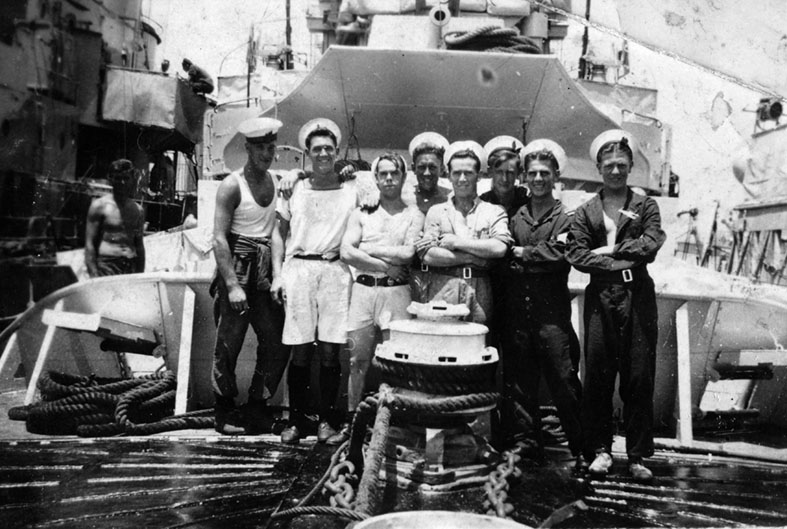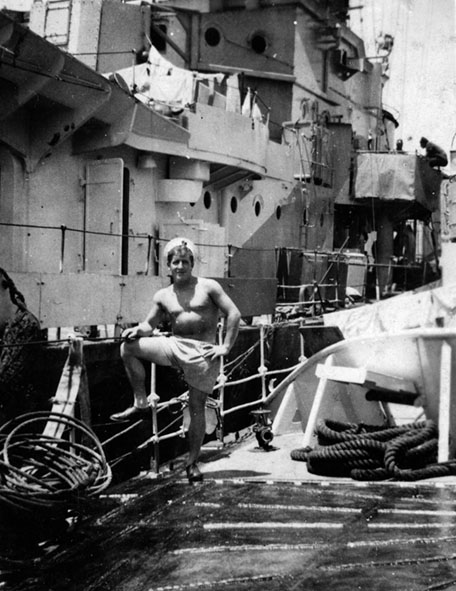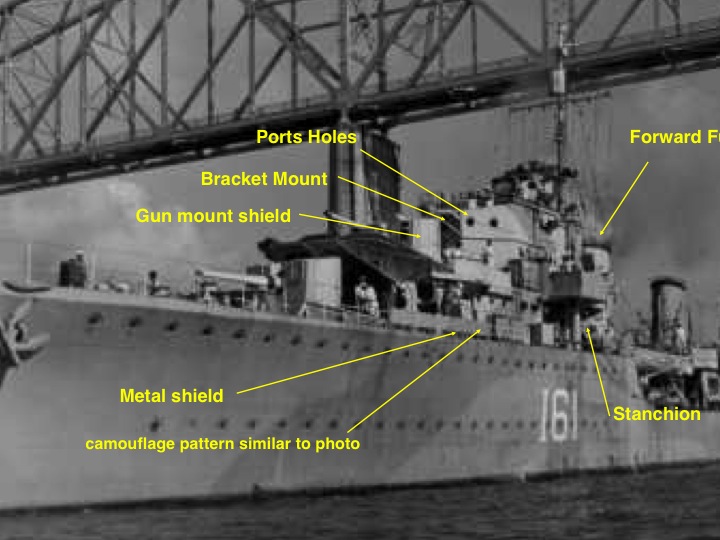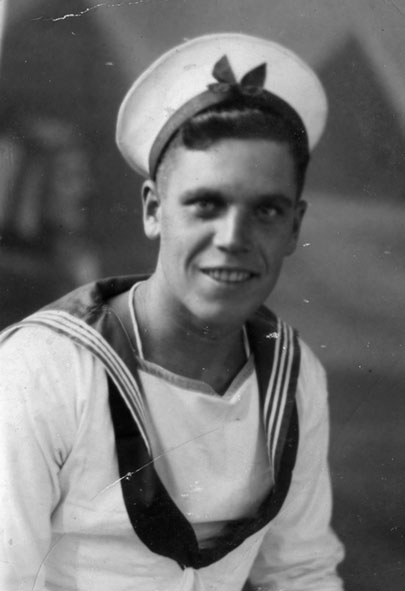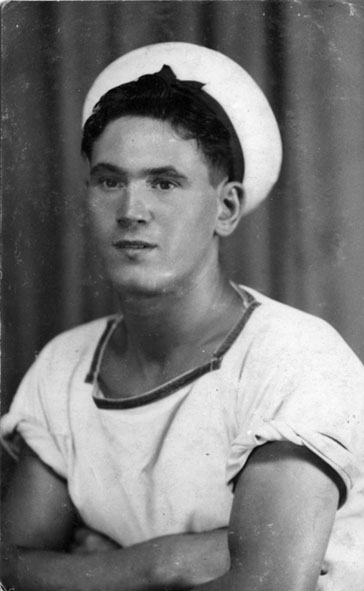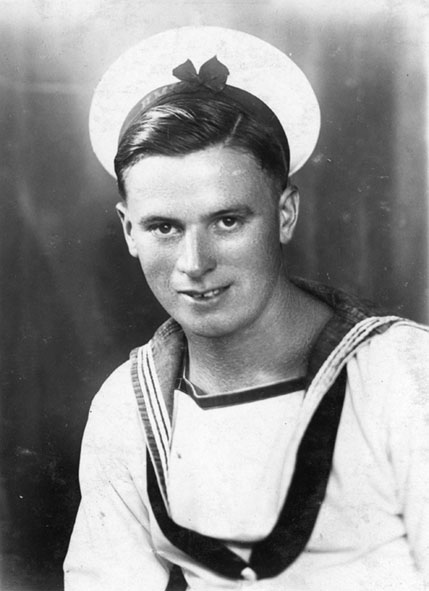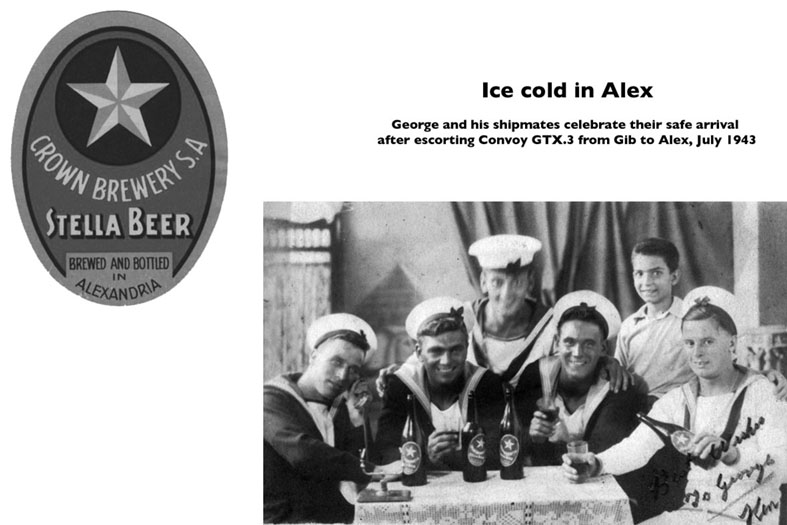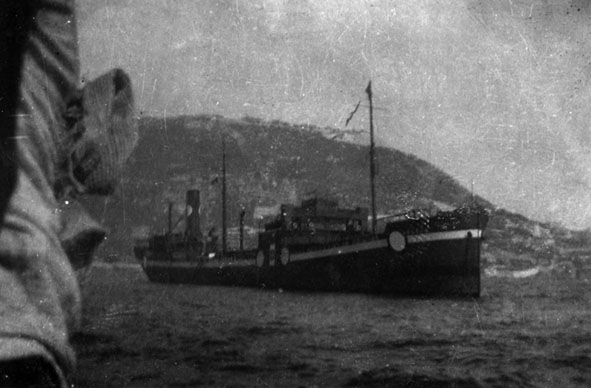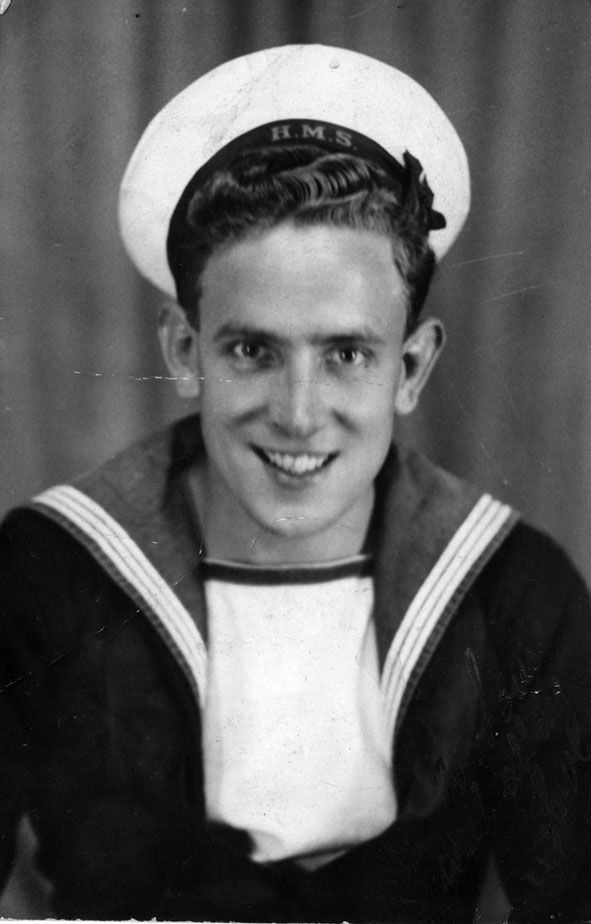
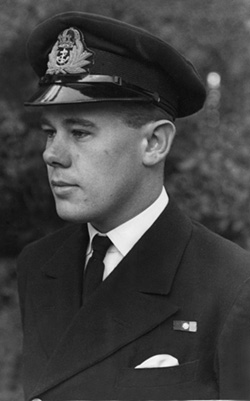
Francis George
Wilson was 18 when
he joined the Royal Navy in September 1941 but already married. He was
from St Helens in Lancashire and joined
Venomous
during her refit at Troon in March 1942 and left at Falmouth in October 1943.
As the ASDIC operator he would
have reported to
Warrant Officer Herbert J.B. Button DSM RN who was
responsible for anti-submarine operations. George Wilson had a crucial role to play on the 11 November 1942 listening for
"pings" from the U-boat which sank
Hecla
but, sadly, left behind no written record of what happened that night. Stephen Barney, the Anti-Submarine Warfare Officer
(ASCO) in
Venomous in 1943, spoke at
the book launch for the new hardback edition of
A Hard Fought Ship in May 2017. Click on the link to find out more about
the use of Asdic in Venomous.
These family photographs are the
property of George Wilsion's grandson, Andrew
Wilson. The photograph of crew members posing in front of B Gun while
Venomous lay alongside a destroyer was probably taken at Alex before Operation
Husky,
the landings in Sicily. I have also been sent a copy of this photograph
by the niece of Jimmy Ackerman who is third from left in the
photograph. Curiously, Ackerman is a German name meaning ploughman.
John Rodgaard has identified the destroyer as a member of the G, H or I
classes, fleet destroyers built in the 1930s. A possibler candidate
which took part in Operation Husky would be
HMS Ilex (I161).
Take a look at
George Wilson's photographs and if you can provide further details or
identify any of those on them please
e-mail me.








 Francis George
Wilson was 18 when
he joined the Royal Navy in September 1941 but already married. He was
from St Helens in Lancashire and joined Venomous
during her refit at Troon in March 1942 and left at Falmouth in October 1943.
Francis George
Wilson was 18 when
he joined the Royal Navy in September 1941 but already married. He was
from St Helens in Lancashire and joined Venomous
during her refit at Troon in March 1942 and left at Falmouth in October 1943.
